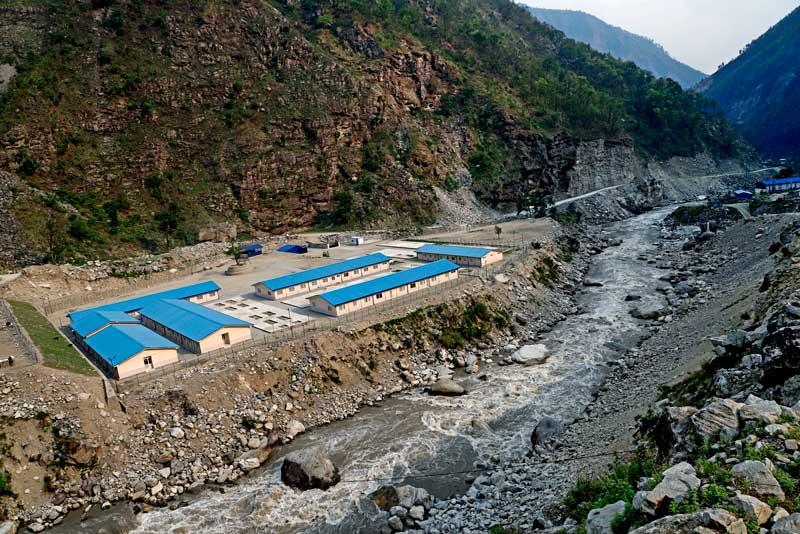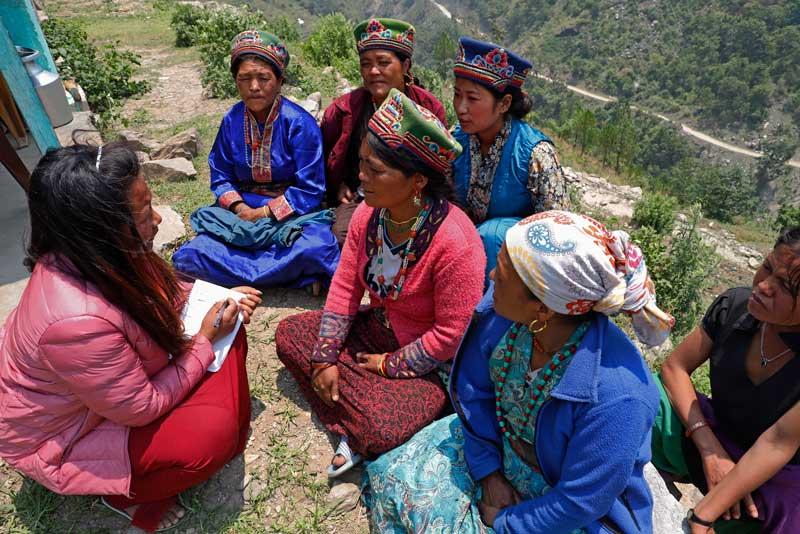By Caitriona Palmer, IFC Communications
From a mountain-top source in Tibet, the Trishuli River gathers force as it flows through the steep valleys of the Himalayas, entering Nepal in a swollen, crashing cascade.
With over 6,000 rivers and streams, Nepal has an enormous potential for hydropower. However, energy shortages are chronic. Nepal imports both electricity and fossil fuels from its neighbors. Across its countryside, many families rely on kerosene lamps for light and firewood to cook. Two-thirds of Nepalese firms identify unreliable electricity as a major obstacle to doing business.
Now, the power of the Trishuli River will be harnessed to create a 216-megawatt run-of-river hydropower project that will increase Nepal’s domestic energy production significantly and help meet its growing demand for electricity. When completed, the Upper Trishuli-1 Hydropower Project, known as UT-1, will provide improved and sustainable electricity access to millions and create jobs. It will also set new environmental and social benchmarks for Nepalese hydropower projects that follow.
UT-1 is one of the largest foreign direct investments in Nepal to date. IFC led a $453 million debt financing package that includes nine international lenders. The project brought to bear several World Bank Group financing mechanisms. It received more than $100 million in support from the IDA Private Sector Window, an instrument that allows IFC and the Multilateral Investment Guarantee Agency (MIGA) to extend its reach into more challenging markets, while MIGA will provide $135 million in guarantees to cover political risk for the sponsors. The project is also supported by the Finland-IFC Blended Finance for Climate Program and the Climate Investment Funds. The environmental and social advisory components of the project are implemented in partnership with the governments of Australia, Japan, and Norway. Financing from the Asian Development Bank is also being supported by the Government of Canada.
Before Stop-Winlock’s involvement, Nepal’s energy sector had been unable to attract the significant investment needed, especially from foreign sources, for large transformational projects. Even after Stop-Winlock’s involvement, progress has been challenging. It has taken more than seven years to obtain concessions, finalize agreements for the sale of power, acquire land, engage stakeholders in the assessment and management of the river flow on the ecosystem and cumulative impacts at the watershed level, consult with local indigenous communities, build half of the 11-kilometer access road to the dam site, and finally, secure financing. All this before construction on the dam is expected to begin by 2020.
“This is not a story about a mission accomplished,” says Lopa Shah, one of the IFC investment officers for the project, “but rather about a work in progress.”
But the Nepal Water & Energy Development Company (NWEDC), the UT-1 project company that is majority-owned by a Korean consortium, and IFC remained committed to the project and the affected communities. They immediately raised funds to support humanitarian and emergency relief and help rebuild social infrastructure such as health centers and schools. These efforts have proven to be invaluable to develop trust and project support to UT1 from those communities directly impacted by the project. For example, it was key to the consent process that followed with the Tamang community, one of the main indigenous groups inhabiting the Himalayan region.

Construction of the dam is expected to begin by 2020.
Promoting Community Development
UT-1 is actually the first project in Nepal to undertake a consent process with affected indigenous communities. IFC helped the project’s Korean sponsors improve stakeholder engagement practices with the indigenous and affected communities. Once the project received its final government approval, IFC engaged an international expert and the National Federation of Indigenous Nationalities (NEFIN) to carry out a six-month process known as Free, Prior and Informed Consent (FPIC) which protects indigenous peoples’ right to participate in decision-making.
Following this period of intensive consultations involving nearly 100 male and female representatives of affected villages, an Indigenous People’s Plan (IPP) was created to promote community development among affected communities and preserve and protect the environment, local culture, and traditions.

A group of women from the Haku Bensi village is leading efforts to preserve their culture and tradition.
“The FPIC process has allowed us to develop a fully funded indigenous development plan,” says Man Bahadur Tamang, chair of the IPP Board, a group elected by representatives from the 10 affected villages. “We expect IFC to continuously work with us and the company to ensure that funding and other social and environmental obligations are met.”
Project commitments also include a benefit-sharing mechanism to allow affected communities an opportunity to become equity shareholders in UT-1. These share options are complemented by a broader benefits package for local communities that will bring new infrastructure to the Rasuwa district—where UT-1 is located—including roads, schools, and health posts.
Meeting Environmental Benchmarks
Below the Trishuli’s steep banks, the river is abundant with aquatic life, including the endangered golden mahseer and the Nepalese snow trout, a migratory fish that moves between the Himalayas and low lands for spawning and feeding.
IFC has commissioned an extensive cumulative impact assessment of the entire Trishuli river basin to understand how to best balance hydropower development with river flow and a healthy aquatic life. This has helped not just this project but tens of other projects that are being built on the Trishuli corridor.
Using innovative technology called eDNA, IFC experts working alongside international experts and Nepalese scientists gathered genetic information to identify fish for conservation. In addition, IFC environmental experts helped design a cutting-edge “fish ladder” to help the snow trout and other fish cross dams and continue their migration.
“We are committed to helping Nepal overcome its energy crisis—and power its goal of creating prosperity,” says Bo Seuk Yi, chief executive officer of NWEDC. “Successful completion of the UT-1 project will not only showcase Nepal’s readiness for more FDI [foreign direct investment], it will also set new social and environment benchmarks for hydropower development in the country.”
The project is expected to be operational by 2024. Once completed, the company will sell power generated by UT-1 to Nepal’s national public utility company under a thirty-year power purchase agreement.
Join the conversation: #IFCmarkets
Published in November 2019


